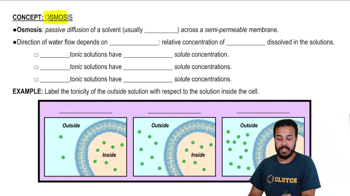Textbook Question
The sodium concentration in a cell is 10 times less than the concentration in the surrounding fluid. How can the cell move sodium out of the cell? (Explain your answer.)a. passive transportb. receptor-mediated endocytosisc. active transportd. facilitated diffusion
1819
views







